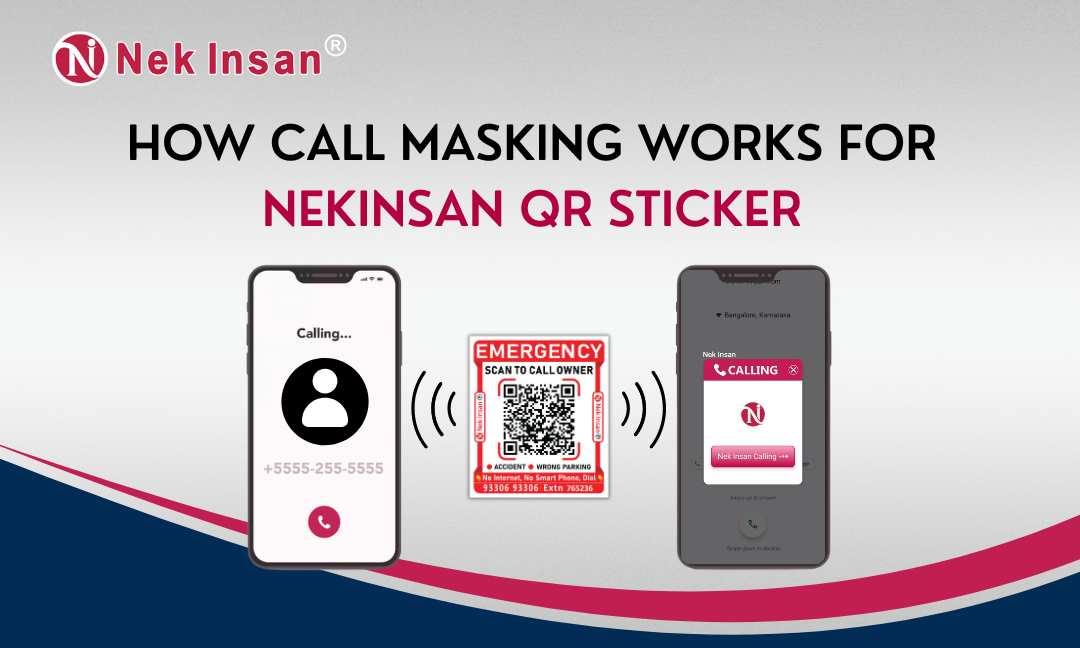
How Call Masking Works For NekInsan QR …
20 hours, 45 minutes
Search to learn about new product features, the latest technology and updates

Views: 27 | Updated: 20 hours, 45 minutes ago
What is Call Masking?
Call masking (also known as number masking or phone masking) is a technology that hides the actual phone numbers of both parties involved in a call. Instead of revealing their real numbers, the call is routed through a temporary or "virtual" number. This ensures privacy and security.
How Call Masking Works for NekInsan QR Stickers:
Scanning the QR Code: When someone scans a NekInsan QR sticker (on a vehicle, key, child's badge, etc.) using any standard QR scanner (like Google Lens, Paytm, GPay, or the NekInsan app), they are presented with options, often related to the emergency (e.g., "Accident," "Wrong Parking," "Lost").
Initiating Communication:
Alert to Owner/Contacts: Upon scanning and selecting an option, an alert is immediately sent to the sticker owner and their pre-registered emergency contacts. This alert typically includes the precise GPS location of the scan, the date and time, and any photos/videos the scanner might have captured (e.g., of an accident scene). A siren alert might also sound on the owner's and contacts' phones, even if locked.
Virtual Number Connection: Crucially, the system then facilitates a call connection between the scanner and the sticker owner/emergency contacts through a virtual number. This means neither the scanner's real phone number nor the owner's/contacts' real phone numbers are revealed to each other.
Privacy Protection:
Anonymity: The virtual number acts as an intermediary, ensuring that personal contact details remain confidential. This prevents potential misuse of numbers, unwanted calls, or harassment after the emergency situation is resolved.
"Call Back" Feature: The owner/emergency contacts receive a "Call Back" button with the alert, allowing them to reconnect with the person who scanned the QR code, still through the masked number, if needed.
Additional Features that Complement Call Masking:
Photo/Video Sharing: The ability for the scanner to send photos/videos of the situation (e.g., an accident) provides valuable context to the emergency contacts without requiring direct personal contact.
Live Location Sharing: The real-time location sharing ensures that the owner and their contacts know exactly where the incident occurred, aiding in timely assistance.
Emergency Helplines: After the masked call, the scanner's phone often displays emergency helpline numbers (Police, Ambulance, Fire) for direct assistance.
Call and Scan Logs: The NekInsan system maintains logs of scans and calls, which can be reviewed by the owner via the app or website.
NekInsan's call masking system ensures that in an emergency, vital communication can occur rapidly and efficiently, while simultaneously safeguarding the personal privacy of all individuals involved by keeping their actual phone numbers hidden. This is a critical feature for personal safety products, as it mitigates concerns about data privacy and potential misuse of contact information.
